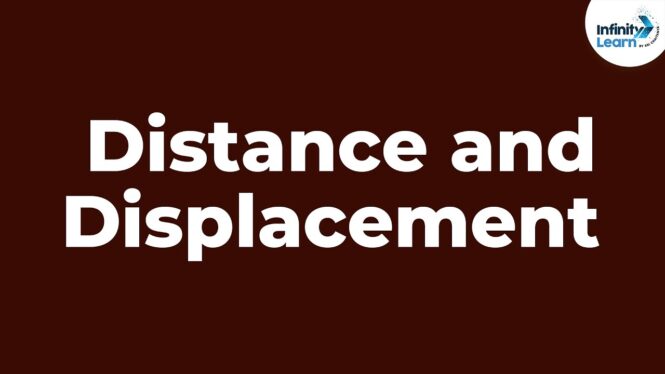
Check NEET Answer Key 2025: https://www.youtube.com/watch?v=Du1lfG0PF-Y If you love our content, please feel free to try out …
Motion | Distance and Displacement | Physics | Infinity Learn/a>
When we move from one place to another, the measure of total length we cover is called the distance. So you have to travel to this town and the best route is straight up north. But because of road works along the way, we have to take a detour, and the distance covered would be something like this. Now when the road works are completed, the distance needed to be covered would be something like this. Distance is measured in meters and denoted as a lower case "m". The distance between these two towns is about twenty thousand meters, but because of the detour, you had to cover a distance of fifty thousand meters. Okay, so nobody likes big numbers, unless it’s your salary. So we should also know that a kilometer is one thousand meters. In our example, we can say that instead of 20 kilometers, you travelled 50 kilometers. Is distance a scalar or a vector quantity? Think about it… If you say someone travelled 20kms from this point, we can’t really tell where they landed up. Maybe here, maybe there, or maybe they just went around in circles. As it does NOT specify a direction, it is a SCALAR quantity. That brings us to Displacement. So what is displacement? “Distance with DIRECTION” is displacement. Distance with direction? What do we mean by that? You made two separate trips to this town. Was the distance covered in both the cases the same? Have a good look. It wasn’t. In each of the two cases the distance was different. The time you took for the detour was greater than the time you could go straight across. But if you call someone to tell them where you are, in both the cases your location is this town, which is 20kms north of your home. The displacement in both the cases is the same. You travelled 20 kms north. North shows the direction and because direction is specified, displacement becomes a VECTOR QUANTITY. Look at this example where a mother asks her son to quietly stay where he is while she takes a quick nap… so now the child runs back and forth many times and returns to the original spot before the mum wakes up. Mum wakes up and sees the child in the same spot and as she hasn’t observed what happened in the last few minutes, she assumes the child has not moved. The child, being the future expert in physics, has in fact disobeyed her instruction and covered lots of distance… but at the same time he can argue that he did follow his mum’s instruction. Lots of distance covered but ZERO displacement! If the distance travelled is a straight line, the displacement will be the same magnitude as the distance but with the direction provided as well. In MOST cases in our day to day lives, the distance covered is greater than the displacement seen. Running errands and travelling back and forth between places cause the amount of distance to build up, though you may not end up very far from home. If you’ve really understood the difference between distance and displacement, you should be able to answer the next question. When a passenger travels by taxi, is he charged based on the distance or displacement? Taxis charge passengers based on DISTANCE. If you go to the neighboring town and return in the same taxi, the taxi meter shows you the charge for the entire round trip. If you now try to explain to the taxi driver that you have had no resultant change in your location, and hence you must pay nothing, it will not impress him much.
#Motion #Distance #Displacement #Physics #Infinity #Learn